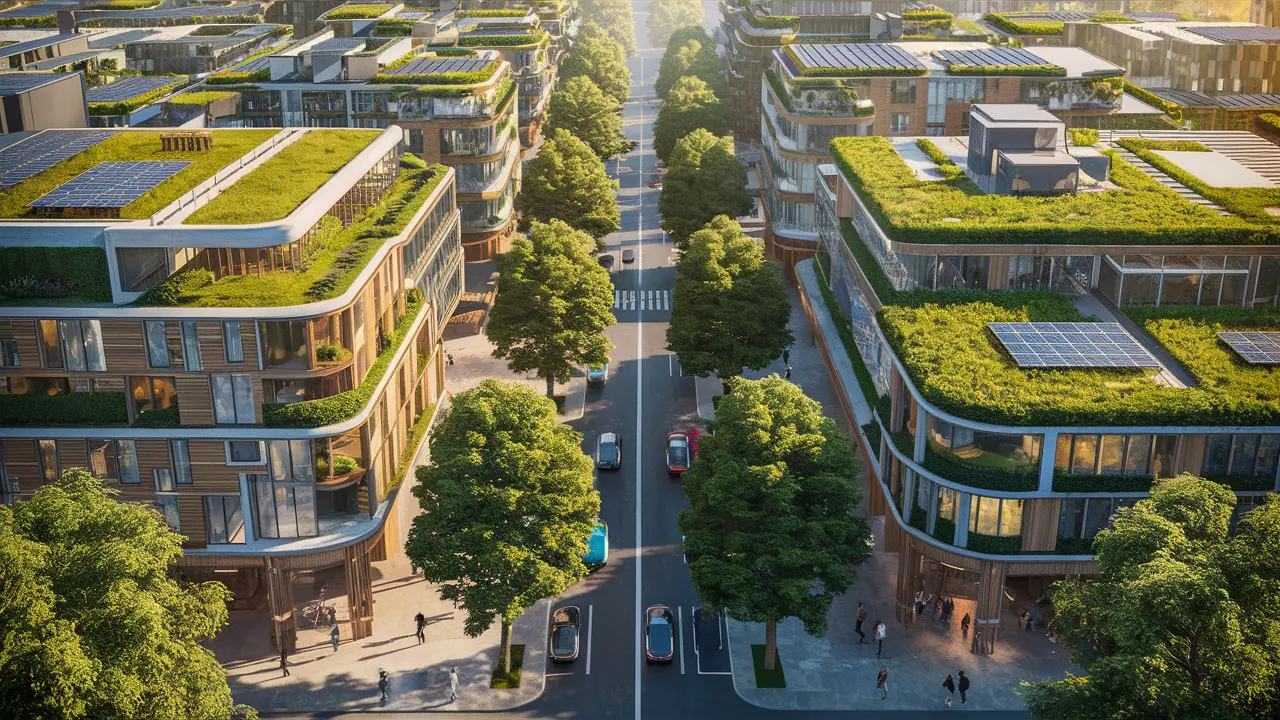Building green homes and offices involves integrating sustainable practices throughout the design, construction, and operation phases to minimize environmental impact and promote occupant well-being. Here’s how sustainable architecture can be implemented in both residential and commercial buildings:
Principles of Sustainable Architecture:
- Energy Efficiency:
- Passive Design: Orienting buildings to maximize natural light and ventilation, reducing reliance on artificial lighting and HVAC systems.
- High-performance Windows: Installing energy-efficient windows with low U-values and low-emissivity coatings to minimize heat loss and gain.
- Insulation: Using high-quality insulation in walls, roofs, and floors to improve thermal comfort and reduce heating and cooling loads.
- Energy-Efficient Appliances and Lighting: Choosing appliances and lighting fixtures with high energy efficiency ratings, such as Energy Star-certified products.
- Water Efficiency:
- Water-Efficient Fixtures: Installing low-flow faucets, showerheads, and toilets to reduce water consumption.
- Greywater Recycling: Implementing systems to capture and treat greywater for non-potable uses like irrigation or toilet flushing.
- Rainwater Harvesting: Collecting rainwater for landscape irrigation or non-potable indoor uses, reducing demand on municipal water supplies.
- Materials Selection:
- Sustainable and Recycled Materials: Using renewable materials such as bamboo, cork, or reclaimed wood for flooring, cabinetry, and finishes.
- Low-impact Materials: Choosing materials with low embodied energy and environmental impact throughout their lifecycle.
- Local Sourcing: Selecting materials sourced locally to reduce transportation-related carbon emissions and support local economies.
- Indoor Environmental Quality:
- Natural Ventilation: Designing for cross-ventilation and operable windows to enhance indoor air quality and occupant comfort.
- Low-VOC Materials: Using paints, adhesives, and finishes that emit minimal volatile organic compounds (VOCs) to improve indoor air quality.
- Daylighting: Maximizing natural light through well-placed windows and skylights to reduce reliance on artificial lighting and promote a connection to the outdoors.
- Renewable Energy Integration:
- Solar Power: Installing photovoltaic (PV) panels on roofs or facades to generate clean, renewable electricity for the building’s energy needs.
- Wind Power: Incorporating small-scale wind turbines where feasible to supplement renewable energy generation.
- Geothermal Systems: Utilizing geothermal heat pumps for heating and cooling, leveraging the stable temperature of the ground or nearby water bodies.
- Waste Reduction and Recycling:
- Construction Waste Management: Implementing practices to minimize construction waste and divert materials from landfills through recycling and reuse.
- Operational Waste Reduction: Setting up recycling programs and encouraging responsible consumption and waste management practices among building occupants.
Benefits of Sustainable Architecture:
- Environmental Benefits: Reduces carbon footprint, conserves natural resources, and mitigates climate change impacts.
- Economic Benefits: Lowers operating costs through energy and water savings, enhances property value, and attracts environmentally conscious tenants.
- Social Benefits: Improves occupant health and well-being, enhances indoor comfort and productivity, and supports a sustainable lifestyle.
Case Studies and Examples:
- Masdar City, Abu Dhabi: A sustainable urban development designed to be a net-zero carbon city, integrating renewable energy, water-efficient systems, and passive design strategies.
- One Central Park, Sydney: Features green walls and rooftop gardens that improve air quality, reduce urban heat island effect, and enhance biodiversity within an urban setting.
- Bullitt Center, Seattle: A commercial office building that meets the Living Building Challenge, producing its own energy through solar panels and rainwater collection, and achieving net-zero energy and water use.
By embracing sustainable architecture principles and practices, green homes and offices not only contribute to a healthier environment but also offer long-term economic benefits and enhance the quality of life for occupants.

